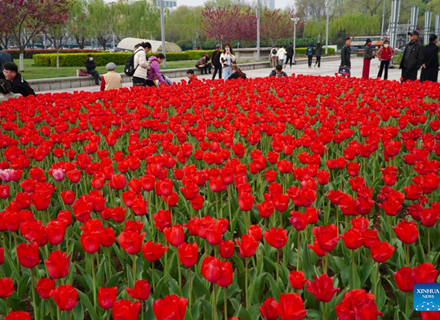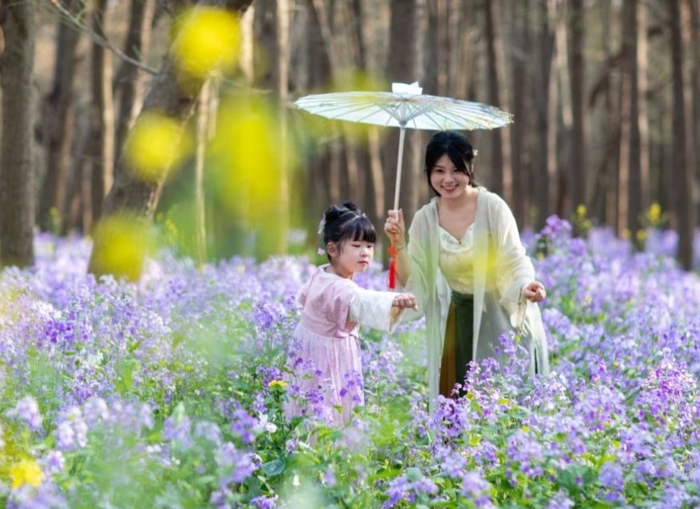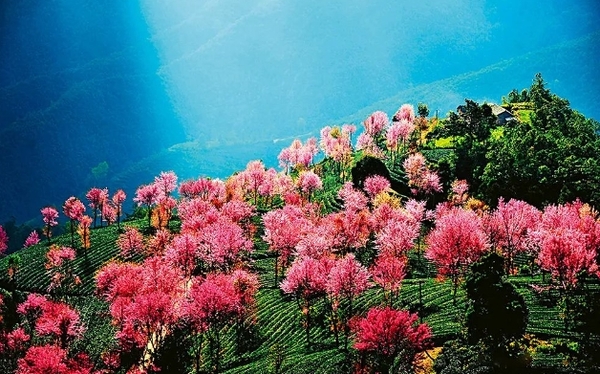
While much of the country is coping with cold winter conditions, there is an ideal place in China where travelers can embrace sunshine and a sea of flowers — the cherry blossom valley of Wuliang Mountain. It is situated in Nanjian Yi Autonomous County, in Dali Bai Autonomous Prefecture, in southwest China's Yunnan Province. Nanjian is known for its picturesque scenery, and its traditional ethnic culture.
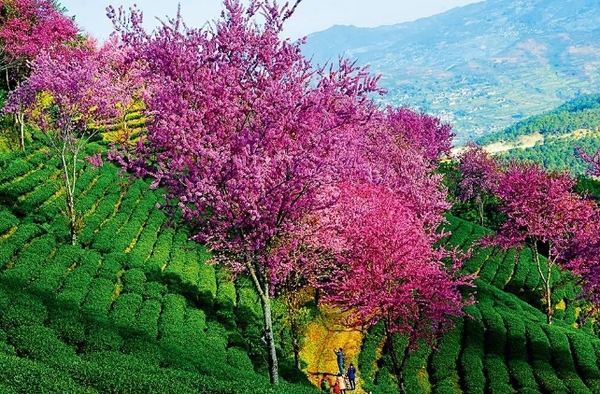
Picturesque Scenery
Wuliang Mountain is no stranger to wuxia (martial arts and chivalry) fans, both at home and abroad. In the wuxia novels, written by Jin Yong, one of the most influential wuxia novelists during the 20th century, the mountain is a mysterious and romantic place, where some peerless masters live in seclusion. In reality, it is known for its tea and picturesque view of cherry blossoms in winter.
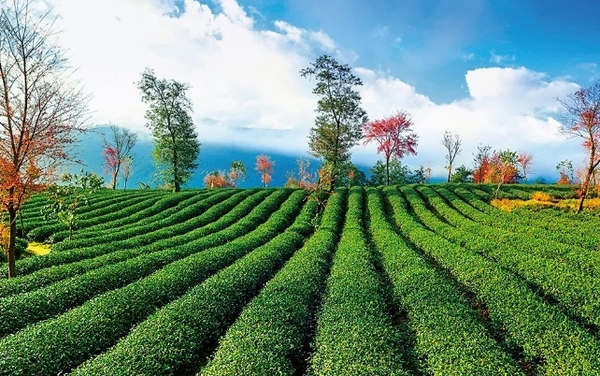
The locals began planting tea more than 1,000 years ago. Given the area's high altitude, humidity, low-intensity sunlight, and wide temperature fluctuations between day and night, the tea leaves are thick and tender. The tea, processed from the high-quality tea leaves, has a rich aroma and taste.
The locals have long planted cherry trees in the tea gardens, to help reduce damage to the tea leaves caused by long hours of sunshine. The cherry trees not only provide shade for the tea leaves, but also turn the tea garden into a fairyland when the cherry blossoms are in full bloom. Every year, the cherry blossoms come out between late November and early December. The pink blossoms decorate the blue sky and green tea fields, making it a paradise for tourists and photographers.
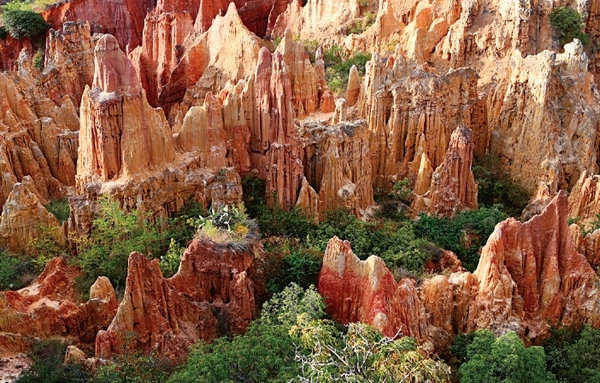
Natural Wonders
Nanjian is also famous for its unique landform of earth forest, formed by geological movement and soil erosion (mainly caused by water) millions of years ago. Magnificent earth pillars, of various forms, look like pillars, swords, bamboo shoots, human figures and exotic animals. As visitors are enjoying the breathtaking scenery, they can let their imaginations run wild.
The earth forest, which covers nearly one square kilometer, has a wide range of vibrant colors, including red, yellow, orange, white and brown. With fantastic forms, diverse colors, and a grand landscape, it is like a world of wonders, created by great nature.
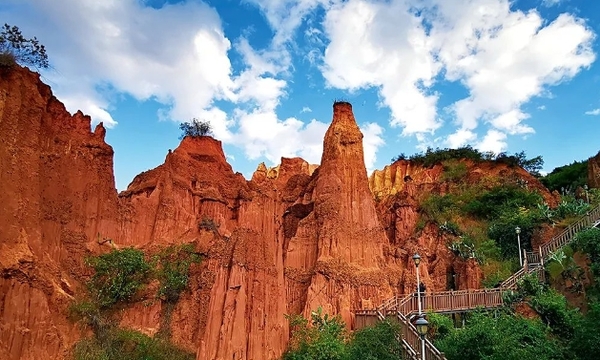
Unique Folk Culture
In Nanjian, the people of the Yi ethnic group have an interesting tradition, tiaocai, or dancing while serving dishes. The dance, which has a history of more than 1,200 years, is often performed to entertain guests on grand occasions, including festivals, weddings and funerals.
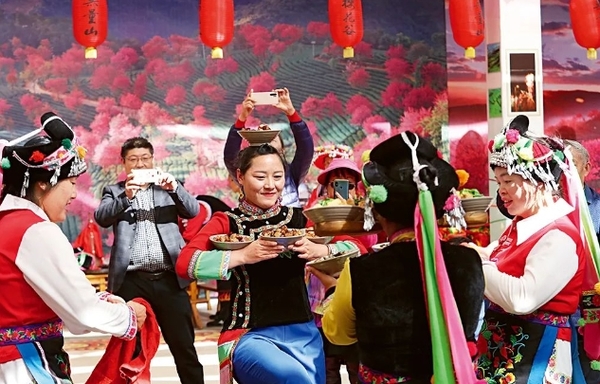
During banquets, after the guests take their seats, tiaocai begins. Performers, with Yi costumes, begin serving the dishes, from the kitchen to the tables. The dishes are often placed in porcelain bowls, or on porcelain plates. The performers carry the dishes, or wooden trays on which the dishes are placed, with their hands, arms, and even their heads. Highly skilled performers are able to carry the dishes with their teeth; they can clench a tray, or even a small table (on which the dishes are placed), in their teeth.
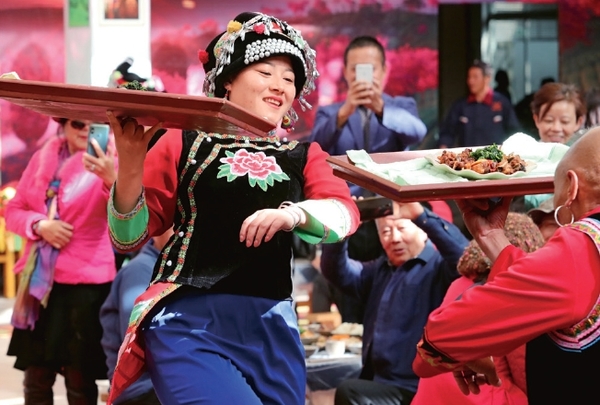
Even more amazing, the performers dance to the rhythm of a drum, suona horn (a woodwind instrument), and/or other folk instruments, while they carry the dishes. They jump, swing their arms, sway back and forth, rotate their bodies, or perform dance movements that imitate animals, such as a deer looking at the moon, and an egret stretching its leg. When the performers arrive at the tables, they arrange the tasty dishes, in a traditional way. It is marvelous that not even a drop of soup is spilled during the process.
Tiaocai, which combines food, music, dance and acrobatics, reflects the unique traditional culture of the Yis in Nanjian. In 2003, Nanjian was named "the hometown of tiaocai folk art in China" by the Ministry of Culture (the predecessor of the Ministry of Culture and Tourism). In 2008, China added tiaocai to the list of the country's intangible cultural heritage.
Photos from Shen Haibin and VCG
(Women of China English Monthly January 2024)
32.3KPlease understand that womenofchina.cn,a non-profit, information-communication website, cannot reach every writer before using articles and images. For copyright issues, please contact us by emailing: [email protected]. The articles published and opinions expressed on this website represent the opinions of writers and are not necessarily shared by womenofchina.cn.



